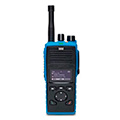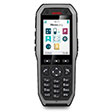
ATEX
Keep Everyone Safe with ATEX Phones, Headsets, Mobiles, and Radios
Working in hazardous environments demands reliable, safety-first equipment. Whether you're in oil and gas, mining, or chemical processing, having the right tools is crucial. Our range of ATEX explosion-proof and intrinsically safe devices, from tough radios to specialist headsets and mobile devices, is designed to keep you connected in the toughest conditions.
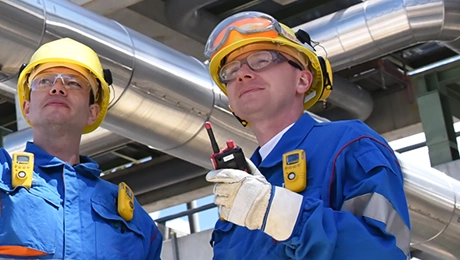
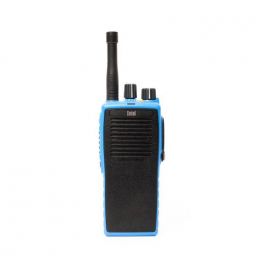
Entel DT952 ATEX PMR446
IN STOCKThis DMR446 license free portable is the latest addition to Entel´s DTEx DMR Digital Series of Intrinsically Safe radios.- ATEX II 2G Ex ib IIC T4 Gb
- PMR446 Walkie Talkie: license-free, unlimited communications
- IP68 certification: water resistant up to 2m for 4 hours
- Shock and vibration resistant: Mil-Spec 810G
- 32 communication channels on the 446MHz frequency band
- Hands-free VOX function with optional accessory
- PMR / DMR: maximum interoperability with other walkie talkies
- Lone worker safety, programmable SOS button
- 16 Channels, 1 Zone
- High-capacity Li-Ion battery
- 3 watts loudest & best clarity audio - in class
- 2 slot simplex
- Multiple receive groups
- Talker alias (TX only)
- Group & Individual calling
- Programmable buttons
£824.00£658.99 £790.79 Incl. VATRef: ENTDT952UKCompare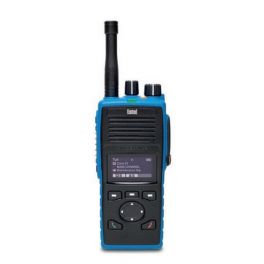
Entel DT953 ATEX II
License-free ATEX walkie talkie with 64 channels and IP68 protection- License-free PMR446 ATEX walkie talkie
- OLED screen
- Submersible pumps IP68 and ATEX IIC certification
- With 5 functionality buttons
- Maximum 64 channels
- Compatible with third-party accessories
IN STOCK5 of 1 Reviews£892.00£713.99 £856.79 Incl. VATRef: ENTDT953UKCompare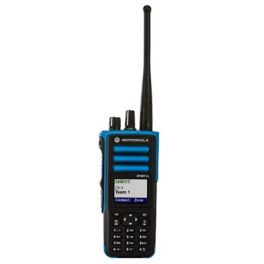
Motorola DP4801Ex - UHF ATEX
IN STOCKUHF walkie talkie with ATEX certificate, comfortable analogue-digital transition, 1000 channels, with a display
- UHF walkie-talkie with ATEX certification: for potentially explosive areas
- Easy analogue-digital transition
- Digital portable with 1000 channels
- 5 programmable side buttons
- Automatic volume adjustment
- IP67 Regulations
- Automatic suppression of ambient noise
- Man Down function
- Lone Worker function
- Integrated GPS
- This model requires a license
£1,447.00£1,058.99 £1,270.79 Incl. VATRef: MODP4801UATEXCompare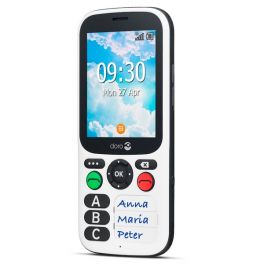
Doro - Mobile 780X IUP
Modern and easy-to-use PTI 4G mobile phone with man-down alert- 4G protection phone
- Alert call or SMS with integrated GPS
- 3 pre-programmed numbers
- Automatic alert in case of loss of verticality
- Integrated SOS button
- Large keys, large print display
- Compatible with all operators
IN STOCK4 of 1 Reviews£175.99£159.99 £191.99 Incl. VATRef: DM780XIUPCompare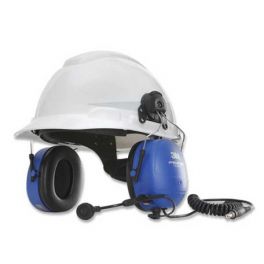
3M Peltor Atex Twin Cup Helmet Headset
IN STOCKPeltor ATEX approved Twin Cup ear defender helmet headset, with microphone, for mobile and radio communications- ATEX approved and suitable for use in potentiallty exlosive enviroments
- High attenuation twin cup ear defender headset with helmet attachment
- With optimised acoustic design and more space for ears
- In-built microphone for mobile and radio communications
- Spiral cord for connection to Peltor adapter that enables PTT (push to talk)
- Comfortable soft ear pads
- Polyurethance insulated kevlar connecter cord
£459.79£386.99 £464.39 Incl. VATRef: PELATXTWNCHLCompare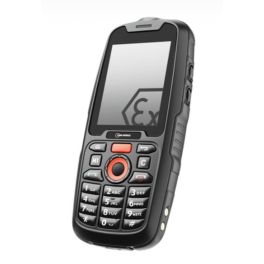
Isafe IS120.1 ATEX Mobile Phone Zone 1/21
IN STOCKRugged 4G mobile phone for ATEX Zone 1/21 with reinforced speaker and replaceable battery.- Certified for ATEX Zone 1/21
- Reinforced speaker for loud environments
- Replaceable 2200 mAh battery
- IP68 & MIL-STD-810H protection rating
- Dual-band Wi-Fi (2.4/5 GHz)
- Bluetooth® 5.0
- 2.4" Gorilla Glass 3 display
- ISM-OS operating system
£804.99 £965.99 Incl. VATRef: ISAFEIS1201V2Compare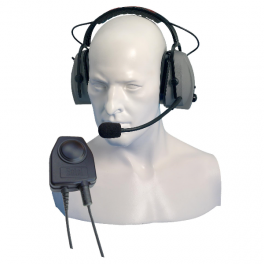
Entel CHP950D Ear Defender for Entel HT ATEX Series
IN STOCKEntel CHP950D intrinsically safe double earcup ear defender with VOX- for HT ATEX Series radios- ATEX approved intrinsically safe
- Heavy-duty double ear-cup ear defender
- Comfortable padded headband
- VOX hands-free and PTT button
- High-quality noise-canceling boom microphone
- Compatible with HT ATEX series handheld radios
£369.00£298.99 £358.79 Incl. VATRef: ENTCHP950DCompare
Alcatel-Lucent Dect 8262
Rugged IP65 Wireless & Bluetooth phone for Alcatel compatible installations- IP65: Resistant to blows, dust and water splashes
- SOS button
- Vibration
- Large colour screen
- 3.5mm jack connection for headphones
- Bluetooth
- Talk Time/ Standby Time: Up to 20/200 hours
- Compatible and optimized for use only with Alcatel-Lucent antennas
- It comes with a battery, without the charger
IN STOCK4.3 of 3 Reviews£558.99£367.99 £441.59 Incl. VATRef: ALM8262Compare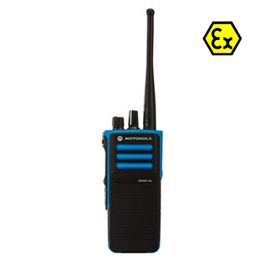
Motorola DP4401Ex - VHF ATEX
IN STOCKProfessional walkie talkie, VHF band, ATEX certified. Great audio quality and comfortable analog-digital transition- VHF walkie-talkie with ATEX certification: for potentially explosive areas
- Digital portable with 32 channels
- 3 programmable side buttons
- Automatic volume adjustment
- IP67 Regulations
- Automatic suppression of ambient noise
- Man Down function
- Lone Worker function
- GPS
- This product requires a license
£1,147.00£838.99 £1,006.79 Incl. VATRef: MODP4401VATEXCompare
Entel DT982M ATEX
IN STOCKAvailable in either VHF or UHF, display and non-display models, the industrial grade DTEx Series sets the benchmark for next-generation onboard intrinsically safe portables- 16 Channels
- IP68 Submersible (2m, 4 hours)
- MILSTD construction 810C/D/E/F/G
- High capacity Li-Ion battery
- Exceptionally loud & best clarify audio - in class
- Programmable buttons
- Gold plated accessory connector
- Locking accessory connector
- Accessory audio tailoring optimises audio for each accessory
£824.00£658.99 £790.79 Incl. VATRef: ENTDT982MUKCompare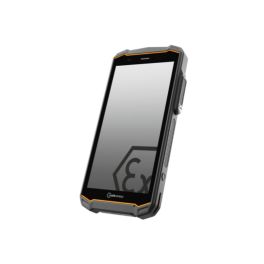
Isafe IS540.2 Smartphone
IN STOCKRugged 5G smartphone with a 6" Full HD display, 48 MP camera, 4400 mAh replaceable battery, and explosion protection for zones 2/22.- Rugged 5G smartphone with IP68 and MIL-STD 810H protection
- Bluetooth 5.2 and Android 14 operating system
- GPS, A-GPS, Glonass, Beidou, Galileo
- Rear and front cameras (48 MP / 5 MP)
- 3rd generation Gorilla Glass® shatter-resistant display
- 4400 mAh replaceable battery
- Amplified speaker for noisy environments
- Programmable side key and red emergency button
£1,347.99 £1,617.59 Incl. VATRef: ISAFEIS5402Compare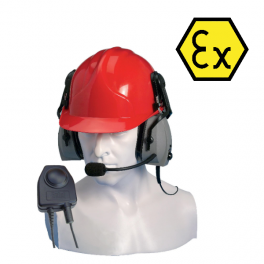
ATEX Ear Defender for Entel HT ATEX (Hard Hat)
IN STOCKIntrinsically safe Duo Ear Defender with VOX for Entel HT ATEX Series (hard hat version)- ATEX approved intrinsically safe
- Heavy duty double ear cup ear defender for use with hard hats
- VOX hands free and PTT button
- High quality noise cancelling boom microphone
- Universal hard hat adapter supplied
- Compatible with Entel HT ATEX series radios
£369.00£298.99 £358.79 Incl. VATRef: ENTCHP950HDCompare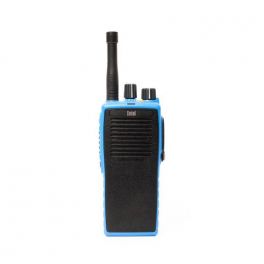
Entel DT982 UHF ATEX
IN STOCKThe rugged DTEx delivers exceptionally loud audio coupled with outstanding audio clarity.- 16 Channels, 1 Zone
- IP68 Submersible (2m, 4 hours)
- MILSTD construction 810C/D/E/F/G
- High capacity Li-Ion battery
- Exceptionally loud & best clarify audio - in class
- 2 slot simplex
- Multiple receive groups
- Talker alias (TX only)
- Lone-Worker & Man-Down
- Personal attack button
- Group calling
- Individual calling
- Programmable buttons
- Gold plated accessory connector
- Locking accessory connector
£824.00£658.99 £790.79 Incl. VATRef: ENTDT982ATEXUKCompare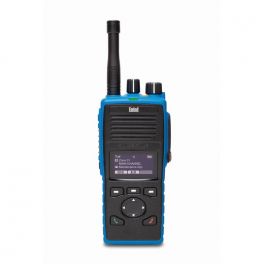
Entel DT985 UHF ATEX
IN STOCKThe rugged DTEx delivers exceptionally loud audio coupled with outstanding audio clarity.- 99 Channels, 8 Zones
- IP68 Submersible (2m, 4 hours)
- MILSTD construction 810C/D/E/F/G
- High capacity Li-Ion battery
- Multiple channel zones
- Exceptionally loud & best clarify audio - in class
- 2 slot simplex
- Multiple receive groups
- Talker alias
- Lone-Worker & Man-Down
- Personal attack button
- Group calling
- Individual calling
- Caller ID
- Detailed or large display info - programmable
- Programmable buttons
- Gold plated accessory connector
- Locking accessory connector
- Accessory audio tailoring optimises audio for each accessory
- High contrast white on black OLED
£892.00£713.99 £856.79 Incl. VATRef: ENTDT985UKCompare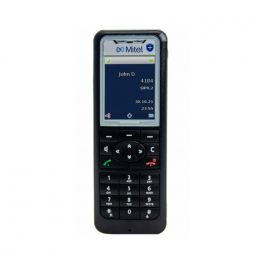
Mitel 632DT - Handset Only
IN STOCKRobust PABX Astra special cordless phone with high resistance level and emergency button.- Mitel Aastra Dect cordless phone special installation
- 200 contacts directory
- 2" 7-line colour TFT display
- Dustproof and waterproof (IP65)
- Handsfree and 2.5 mm headset jack
- Bluetooth for wireless headset
- Man down, no movement and escape alarm functions
- BioCote® antimicrobial technology
- Supplied without charger
£499.99£299.99 £359.99 Incl. VATRef: AA632DTONLYCompare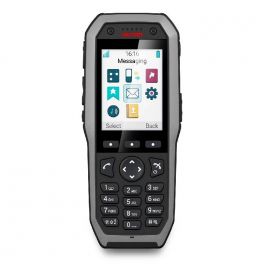
Ascom D83 Protector – ATEX
IN STOCKThe rugged DECT cordless phone for mobile professionals.- ATEX certified DECT cordless telephone
- 2.4'' color TFT display with LED backlight
- LED indicator for incoming calls and messages
- Wideband HD sound transmission
- Noise canceling speaker and microphones
- Integrates 3 distinct directories: central , professional and local
- Support for SMS and phone shortcuts
- Autonomy: 10h in conversation ; 120h standby
- Connectivity: Versatile connector ; 3.5mm jack ; Bluetooth 5.0
- Precise location module available
- IP67 certified: protected against dust and temporary immersion
- Push button, loss of standing and immobility alarms available
£1,249.99£1,149.99 £1,379.99 Incl. VATRef: ASD83PEXCompare
Gigaset Pro RT700H
IN STOCKRugged cordless phone with alarm key for safe working in the most challenging conditions- Disinfectant-resistant cordless phone
- Large 2.4'' illuminated TFT color screen
- IP65 certified, resistant to drops, water and metal dust
- "SOS" alarm key that can be pressed with gloves
- LED flashlight for alarm notification and location of people
- Headphone connection via Bluetooth® 4.2 or 3.5 mm jack
- Hands-free with HD voice/CAT-IQ 2.1 sound quality
- Motion sensor: man down, no movement and escape
£290.99£209.99 £251.99 Incl. VATRef: SIR700HPTCompare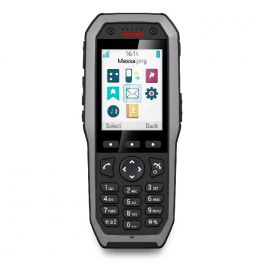
Ascom D83 Protector
IN STOCKThe rugged DECT cordless phone for mobile professionals.- Professional DECT cordless phone
- 2.4'' color TFT display with LED backlight
- LED indicator for incoming calls and messages
- Wideband HD sound transmission
- Noise canceling speaker and microphones
- Integrates 3 distinct directories: central , professional and local
- Support for SMS and phone shortcuts
- Autonomy: 10h in conversation ; 120h standby
- Connectivity: Versatile connector ; 3.5mm jack ; Bluetooth 5.0
- Precise location module available
- IP67 certified: protected against dust and temporary immersion
- Push button, loss of standing and immobility alarms available
£854.99£799.99 £959.99 Incl. VATRef: ASD83PCompare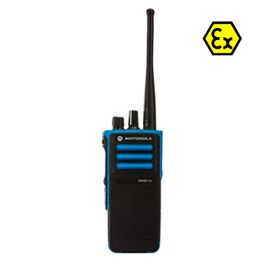
Motorola DP4401Ex - UHF ATEX
IN STOCKProfessional walkie-talkie, UHF band, ATEX certified. Great audio quality and comfortable analogue-digital transition- UHF walkie-talkie with ATEX certification: for potentially explosive areas
- Digital portable with 32 channels
- 3 programmable side buttons
- Automatic volume adjustment
- IP67 Regulations
- Automatic suppression of ambient noise
- Man Down function
- Lone Worker function
- GPS
- This product requires a license
£1,147.00£838.99 £1,006.79 Incl. VATRef: MODP4401UATEXCompare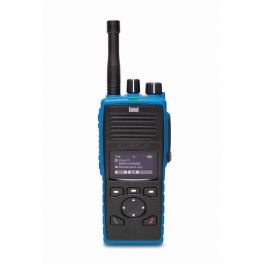
Entel DT944 VHF ATEX
IN STOCKAvailable in either VHF or UHF, display and non-display models, the industrial grade DTEx Series sets the benchmark for next-generation onboard intrinsically safe portables.- All INT, USA & CAN channels
- IP68 Submersible (2m, 4 hours)
- MILSTD construction 810C/D/E/F/G
- High capacity Li-Ion battery
- Exceptionally loud & best clarify audio - in class
- Display channel number & frequency
- Programmable buttons
- Gold plated accessory connector
- Locking accessory connector
- Accessory audio tailoring optimises audio for each accessory
- Easy to read, high contract white on black OLED display
£892.00£713.99 £856.79 Incl. VATRef: ENTDT944VUKCompare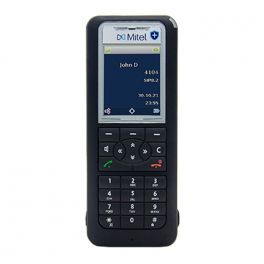
Mitel 632DT
Robust PABX Astra special cordless phone with high resistance level and emergency button.- Mitel Aastra Dect cordless phone special installation
- 200 contacts directory
- 2" 7-line colour TFT display
- Dustproof and waterproof (IP65)
- Handsfree and 2.5 mm headset jack
- Bluetooth for wireless headset
- Man down, no movement and escape alarm functions
- BioCote® antimicrobial technology
- Includes desktop charger
IN STOCK5 of 1 Reviews£499.99£314.99 £377.99 Incl. VATRef: AA632DTCompare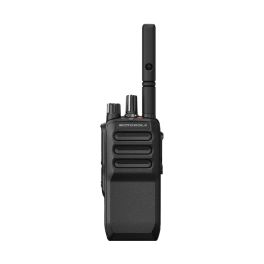
Motorola MOTOTRBO R5 NKP UHF
IN STOCKUHF walkie-talkie with clear, secure communication, powerful audio and rugged, keypad-free design for demanding environments.- Powerful, clear audio even in noisy environments.
- Water, dust and drop resistant: IP67 and MIL-STD-810
- No display and long-lasting battery up to 32 h
- AI-based noise suppression
- Outdoor location tracking (GNSS)
- Emergency button for lone worker protection
- Secure communication with advanced encryption.
- Over-the-air programming (via DMR)
£434.99 £521.99 Incl. VATRef: MOR5NKPUHFCompare
Pepperl Fuchs Smart-Ex® 203 Zone 2/22
Call us for availabilityIntrinsically safe 5G smartphone for Zone 2/22 with Android 13, 6" display, and rugged IP68 design- Certified for ATEX Zone 2/22 and IECEx
- 5G, Wi-Fi 6E, and Bluetooth 5.2 for fast connectivity
- 6" Full HD display, glove-friendly
- Rugged IP68 and MIL-STD-810H rated housing
- 4400 mAh battery for long runtime
- Dual SIM (eSIM + Nano SIM)
- Android 14 with enterprise certification
- Programmable buttons for PTT and alarm
£1,053.99 £1,264.79 Incl. VATRef: ECOMSMEX203DZ2Compare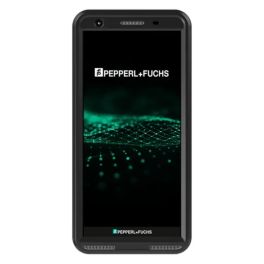
PEPPERL FUCHS SMART EX 03 DZ1
Out of stockDurable 5G smartphone designed for tough, hazardous workplaces, powered by Android™ 15 with advanced safety features.- Global certifications and ATEX approved
- Android™ 15 operating system
- 5G, Wi-Fi 6E, Bluetooth® 5.2
- Dual SIM (eSIM + nano-SIM)
- Lone Worker Protection (LWP) button
- Gorilla® Glass touchscreen usable with gloves
- IP68 and MIL-STD-810H protection
- Security updates until 2030
£2,499.99 £2,999.99 Incl. VATRef: ECOMSMEX03DZ1A15Compare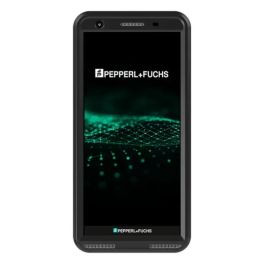
PEPPERL FUCHS SMART EX 03 DZ2
Out of stockRugged 5G smartphone with Android™ 15, dual SIM, and advanced safety features.- Global certifications and ATEX approved
- Android™ 15 operating system
- 5G, Wi-Fi 6E, Bluetooth® 5.2
- Dual SIM (eSIM + nano-SIM)
- Lone Worker Protection (LWP) button
- Gorilla® Glass touchscreen usable with gloves
- IP68 and MIL-STD-810H protection
- Security updates until 2030
£1,903.99 £2,284.79 Incl. VATRef: ECOMSMEX03DZ2A15Compare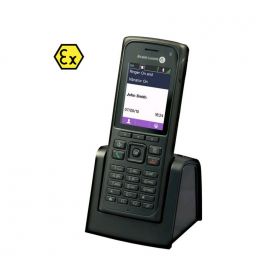
Alcatel-Lucent Dect 8262 ATEX
Out of stockRugged IP65 and ATEX cordless phone- ATEX certificate: special for explosion risk areas
- IP65: Resistant to shocks, dust and splashes of water
- Special Protection for the isolated worker
- SOS button
- Vibration feature
- Large colour screen
- 3.5mm Jack connection for headphones
- Bluetooth
- Autonomy in conversation/standby: Up to 20/200 hours
- Compatible and optimized for use only with Alcatel-Lucent antennas
- Supplied with battery, without a charger
£1,652.99£864.99 £1,037.99 Incl. VATRef: ALM8262ATEXCompare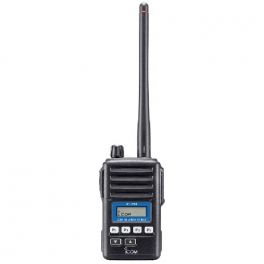
ICOM IC-F51 ATEX VHF
Call us for availabilityICOM IC-F51 ATEX (VHF) Walkie Talkie, 128 channels / 8 zones, 7 programmable buttons, advanced functions- VHF Walkie Talkie (136-174 MHz)
- Protection against explosive environments: ATEX II2G EEx Ib IIA T3
- Protection against water and dust: Meets the IP67 standard
- Compact and robust: MIL-STD 128 channels / 8 zones
- 8 character alphanumeric
- LCD screen
- Battery 1950 mAh: Autonomy of 10 hours
- 7 programmable buttons
- CTCSS, DTCS, Scrambler tones and more advanced features
£514.99 £617.99 Incl. VATRef: ICF51ATEXUKCompare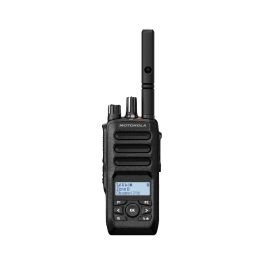
Motorola MOTOTRBO R5 LKP VHF
Call us for availabilityVHF walkie talkie with clear, secure communication, powerful audio, rugged design, and limited keypad for demanding environments.- Powerful and clear audio even in noisy environments.
- Resistant to water, dust and drops: IP67 and MIL-STD-810
- Monochrome display and long-lasting battery up to 32 h
- AI-powered noise suppression
- Outdoor location tracking (GNSS)
- Emergency button for lone worker protection
- Secure communication with advanced encryption.
- Over-the-air programming (via DMR)
£499.99 £599.99 Incl. VATRef: MOR5LKPVHFCompare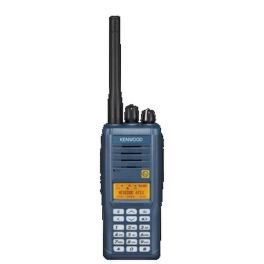
Kenwood NX-330EXE
Out of stockATEX Professionnel Two-way radio that combines the best of radio transceiver functionality with the latest digital technology- Walkie-talkie with license
- ATEX certified
- Operation in DMR (digital) or PMR (analogue)
- Up to 512 channels
- PTI function included: ideal for isolated professionals
- IP67 and IP65 certified: Dust and water-resistant
- Long battery life and battery saving function, up to 14 hours
- Sound enhancements and automatic ambient noise removal
£1,188.99 £1,426.79 Incl. VATRef: KWNX330EXEUKCompare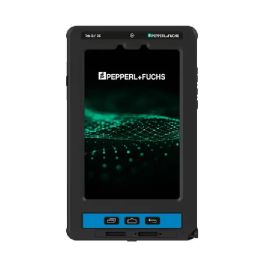
Pepperl Fuchs TAB-EX 05 DZ1 5G
Call us for availabilityRugged 8" 5G Android tablet for hazardous areas, offering high performance and advanced safety standards.- 8" WUXGA display with 1920 x 1200 pixels
- Exynos 1380 Octa-Core processor
- 6 GB RAM and 128 GB internal storage
- Expandable via microSD card up to 1 TB
- Android™ 14 operating system
- 5G connectivity for fast data transfer
- IP68 and MIL-STD-810H certified
- Camera: 13 MP
£2,909.99£2,899.99 £3,479.99 Incl. VATRef: ECOMTABEX05DZ1WCompare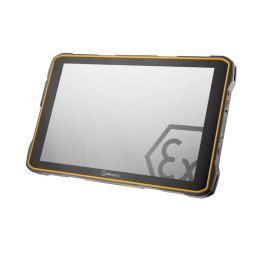
Isafe 940.2 ATEX Tablet Z2
Call us for availability10.1'' 5G tablet, ideal for hazardous environments: ATEX Zone 2/22 certified, with high-performance camera and battery.- For low-risk hazardous areas: ATEX Zone 2/22
- Operating system: Android 14
- 10.1'' touchscreen
- Cameras: rear 50MP, front 5MP
- Memory: 8GB RAM; 128GB internal storage
- Full connectivity: 5G, Wi-Fi, Bluetooth, NFC, GPS
- SOS button for lone worker safety
- IP68 + MIL-STD-810H: resistant to water, shocks,…
£1,901.99 £2,282.39 Incl. VATRef: ISAFEIS9402Compare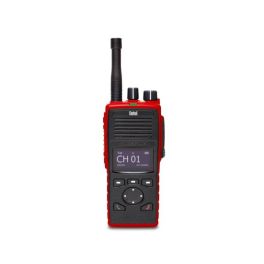
Entel DT985FF ATEX
Call us for availabilityPortable UHF analogue/digital radio, MED and ATEX certified, built to withstand extreme environments.- ATEX IIC T4 certified and compliant with MED/5.20 directive
- Hybrid: supports analogue and digital (DMR)
- 99 channels
- High-contrast OLED display
- Ultra-loud audio for noisy environments
- Accessory connectors resistant to salt corrosion
- Long battery life: 16–18h
- Rugged and waterproof: IP68 + MIL-STD-810
£772.99 £927.59 Incl. VATRef: ENDT985FFCompare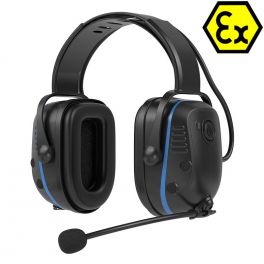
ECOM SM1P Atex
Call us for availabilityProtective headset with integrated walkie-talkie - ATEX Zone 1/21- With integrated walkie talkie, 8 programmed channels
- Not compatible with PMR446 walkies
- Two-way communications
- Bluetooth 3.0 and a range of 15 m (50 ft)
- IP54 certified: dust and splash-proof
- 18 hours battery life and 3 hours charging time
- Noise cancelling wand microphone
- SENS technology: stay aware of your surroundings
- Built-in VOX function
£948.99£916.99 £1,100.39 Incl. VATRef: ECOMHSSM1PEXSTCompare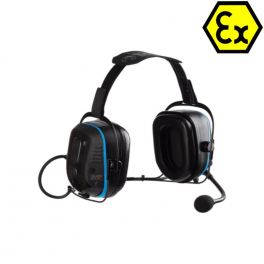
ECOM SM1P Atex neckband
Call us for availabilitySafety headset with integrated walkie-talkie and neckband - ATEX Zone 1/21- With integrated walkie talkie and 8 programmed channels
- Not compatible with PMR446 walkies
- Two-way communications
- Bluetooth 3.0 and 15 m range
- IP54 certified - dust and splash-proof
- 18 hours battery life and 3 hours charging time
- Noise cancelling wand microphone
- SENS technology: stay aware of your surroundings
- Built-in VOX function
£999.99 £1,199.99 Incl. VATRef: ECOMHSSM1PEXSTBTNCompare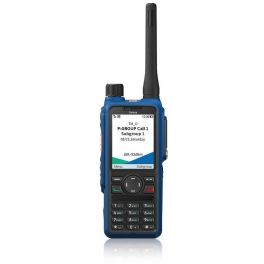
HYTERA HP795Ex IIC UHF
Call us for availabilityDigital two-way radio with ATEX Zone 2 certification, UHF licence, large display, keypad, and Bluetooth - designed for high-risk environments.- ATEX Zone 2 IIC & IECEx: designed for explosive environments
- Dual analogue/digital mode
- 1024 channels and 64 zones
- 2.4'' display + full keypad
- 2W speaker + intelligent noise reduction
- Battery life: up to 24h
- PTI functions, Bluetooth 5.3 and Wi-Fi
- Rugged and waterproof: IP68 + MIL-STD-810
£1,237.99 £1,485.59 Incl. VATRef: HYTHPD795EXCompare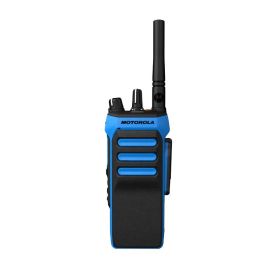
Motorola R7Ex ATEX - UHF
Call us for availabilityRugged digital portable radio with Bluetooth and SOS button, ideal for communication in explosive risk areas.- ATEX/IECEx certified for explosive environments (gas & dust)
- Hybrid: analogue & digital compatibility
- Ultra-rugged: IP68 protection + MIL-STD-810 military standard
- Audio with noise reduction and IMPRES technology
- Wi-Fi, Bluetooth 5.2 and GPS connectivity
- Maximum battery life: 23h30
- Advanced safety features: lone worker, fall alert, AES-256 encryption
£1,230.99 £1,477.19 Incl. VATRef: MOTRBOR7EXCompare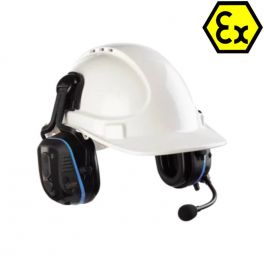
ECOM SM1P Atex with helmet
Call us for availabilitySafety Headset with integrated walkie-talkie and helmet - ATEX Zone 1/21- With integrated walkie talkie and 8 programmed channels
- Not compatible with PMR446 walkie-talkies
- Two-way communications
- Bluetooth 3.0 and 15m range
- IP54 certified: dustproof and splashproof
- 18 hours battery life and 3 hours charging time
- Noise cancelling wand microphone
- SENS technology: stay aware of your surroundings
- Built-in VOX function
£999.99 £1,199.99 Incl. VATRef: ECOMHSSM1PEXSTHMCompare
Motorola DP4801Ex - VHF ATEX
Call us for availabilityVHF two-way radio with ATEX certificate, comfortable analogue-digital transition, 1000 channels, with a display
- VHF walkie-talkie with ATEX certification: for potentially explosive areas
- Easy analogue-digital transition
- Digital portable with 1000 channels
- 5 programmable side buttons
- Automatic volume adjustment
- IP67 Regulations
- Automatic suppression of ambient noise
- Man Down function
- Lone Worker function
- Integrated GPS
- This model requires a license
£1,447.00£1,058.99 £1,270.79 Incl. VATRef: MODP4801VATEXCompare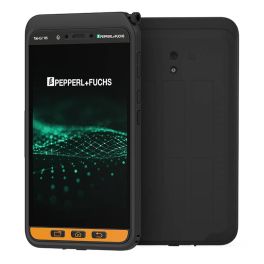
Ecom Tab-Ex
Call us for availabilityUltra-robust 8-inch 5G tablet certified for high-risk environments and optimised for security.- Use in hazardous areas: ATEX Zone 2/22 certified
- 8’ touch screen usable with gloves
- Optimised performance: 6GB RAM
- Advanced connectivity: 5G, Wi-Fi 6, Bluetooth 5.3 and NFC
- Extended battery life: up to 14 hours
- Enhanced security: Samsung Knox 3.10
- IP68 & MIL-STD-810H: resistant to water, shock, etc.
- Google ARCore compatible: augmented reality and field management
£1,583.99 £1,900.79 Incl. VATRef: ECOMTABEX05DZ2WCompare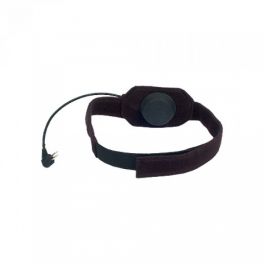
ATEX Throat Microphone for 3M Peltor Headsets
IN STOCKATEX approved throat microphone for use with Peltor ATEX headsets and the Tactical XP- Throat microphone that registers vibrations in your voice box
- Suitable for increadibly noisy enviroments
- Picks up less background noise but quieter speech than standard microphones
- ATEX certified, for use with ATEX headsets and the Peltron Tactical XP
- Worn around the neck
£196.99 £236.39 Incl. VATRef: PELMT91MICCompare
ATEX Explosion-Proof Equipment & Intrinsically Safe Devices
Working in hazardous environments demands robust, reliable communication tools that prioritise safety. Whether you’re in oil and gas, mining, or chemical processing, having the right equipment is not just a practical choice but a critical measure. This section will take you through the available options, share tips for choosing the most suitable equipment, and address common questions to help you make informed decisions.
Choosing Equipment Based on Needs and Usage
In environments where flammable gases, vapours, or dust are present, safety is paramount. ATEX explosion-proof equipment is designed specifically to operate in such conditions without risking ignition. Our selection includes:
-
Rugged Two-Way Radios: Built to endure extreme conditions while providing reliable communication.
-
Specialised Headsets: Engineered for clarity and durability, even in the noisiest workplaces.
-
Mobile Devices: Designed with safety certifications to prevent sparking in explosive atmospheres.
For scenarios requiring even stricter safety measures, intrinsically safe devices are an excellent choice. These devices are engineered to limit electrical and thermal energy, ensuring safe operation in hazardous zones. Options include:
-
Handheld Radios: Compact, efficient, and ideal for consistent communication.
-
Bluetooth Headsets: Designed for mobility and convenience, while meeting stringent safety standards.
Our ATEX-certified equipment also features practical additions such as noise cancellation, long-lasting batteries, and durable designs that withstand dust, water, and temperature extremes. For hands-free operation, accessories like push-to-talk headsets are available, ensuring workers can communicate without compromising their tasks.
Tips Before Buying
- Understand the Zone Classification: Before purchasing, ensure you know the specific ATEX zone classification (Zone 0, Zone 1, or Zone 2) of your workplace. This will guide you in selecting the appropriate certification level for your devices.
- Evaluate Communication Needs: Determine whether you need basic communication or advanced features like noise cancellation and Bluetooth connectivity. This will help you select devices that enhance productivity and safety.
- Consider Battery Life: In hazardous environments, long-lasting battery life is essential. Opt for devices that offer extended operation times to avoid frequent recharging.
- Test Ergonomics: Since these devices may be used for extended periods, ensure that they are comfortable and user-friendly. Look for adjustable headsets and lightweight radios.
- Check Water and Dust Resistance: Ensure that the equipment has the necessary IP ratings to withstand environmental factors such as dust, water, and temperature extremes.
- Explore Accessories: Consider purchasing additional accessories such as carrying cases, charging docks, and spare batteries to enhance the usability of your devices.
FAQs
- What is ATEX certification? ATEX certification ensures that equipment is safe to use in explosive atmospheres. It signifies compliance with European safety standards for hazardous environments.
- Can I use standard devices in hazardous locations? No, standard devices are not designed for use in hazardous environments and can pose significant safety risks. Always use ATEX-certified products.
- What types of ATEX devices are available? We offer a variety of ATEX devices, including two-way radios, headsets, and mobile devices designed for various industrial applications.
- How do I maintain my ATEX equipment? Regular maintenance is essential. Clean the devices according to the manufacturer's guidelines, check for any signs of damage, and ensure all seals are intact.
- Are there any specific training requirements for using ATEX equipment? Yes, employees should be trained on the proper use and limitations of ATEX devices, including emergency protocols in case of equipment failure.
- What is the difference between explosion-proof and intrinsically safe devices? Explosion-proof devices contain the explosion within the unit, while intrinsically safe devices limit energy to prevent ignition. The choice depends on the specific hazards present in your environment.



